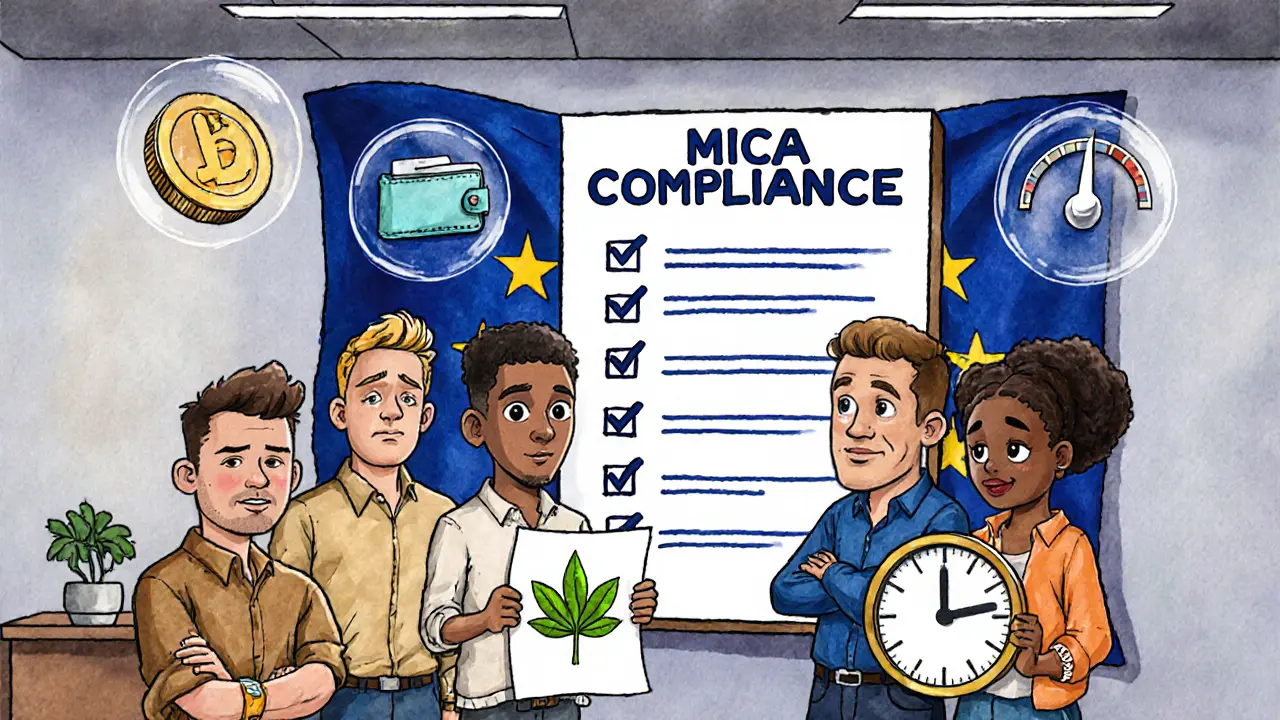Stablecoin Compliance: What It Means and Why It Matters for Crypto Users
When you hold a stablecoin, a cryptocurrency designed to maintain a stable value by pegging to a fiat currency like the US dollar. Also known as fiat-backed stablecoin, it's meant to be the bridge between traditional finance and crypto. But without stablecoin compliance, the set of legal and operational rules that ensure these tokens meet anti-fraud, transparency, and financial safety standards, that bridge can collapse overnight.
Stablecoin compliance isn't optional anymore—it's enforced by governments, exchanges, and even wallet providers. The core pieces? KYC, Know Your Customer rules that verify your identity before you can trade or hold certain tokens, and AML, Anti-Money Laundering checks that track suspicious flows between wallets and exchanges. These aren’t just paperwork—they’re the reason some stablecoins get delisted, why some platforms block users from certain countries, and why your USDT might suddenly stop working on a new app.
Look at what’s happening around the world: Pakistan’s $300 billion crypto trade runs mostly on USDT because people need a stable way to move value when banks won’t help. But that same USDT is tightly controlled in places like Canada, where VirgoCX only lets users trade compliant tokens. Kazakhstan cracked down on mining, not because it hated crypto—but because it wanted to control energy use and tie digital assets to regulated financial systems. Even the National Bank of Cambodia didn’t ban crypto—it banned unlicensed platforms, forcing everyone into compliant channels. This isn’t about stopping innovation. It’s about making sure stablecoins don’t become tools for fraud, tax evasion, or sanctions evasion.
And it’s not just about big players. If you’re using a stablecoin to send money, earn yield, or trade on a DEX, you’re still bound by these rules. Some platforms hide behind "no KYC" claims, but those are the ones that vanish overnight—like AlphaX or Wavelength. Real, lasting platforms—COEXSTAR in the Philippines, VirgoCX in Canada, even regulated exchanges in the U.S.—follow compliance because they want to stay open. You don’t need to be a lawyer to understand this. Just know: if a stablecoin’s issuer doesn’t publish audits, doesn’t prove reserves, and doesn’t follow basic financial rules, it’s not safe. And if an exchange won’t let you deposit or withdraw it, that’s not a bug—it’s a warning.
Below, you’ll find real breakdowns of exchanges, tokens, and airdrops that either respect compliance or ignore it—and the consequences that follow. Some posts show how compliance protects you. Others expose how ignoring it leads to losses, scams, or frozen funds. This isn’t theory. It’s what’s happening right now, in your wallet, on your screen, in your trading history.
